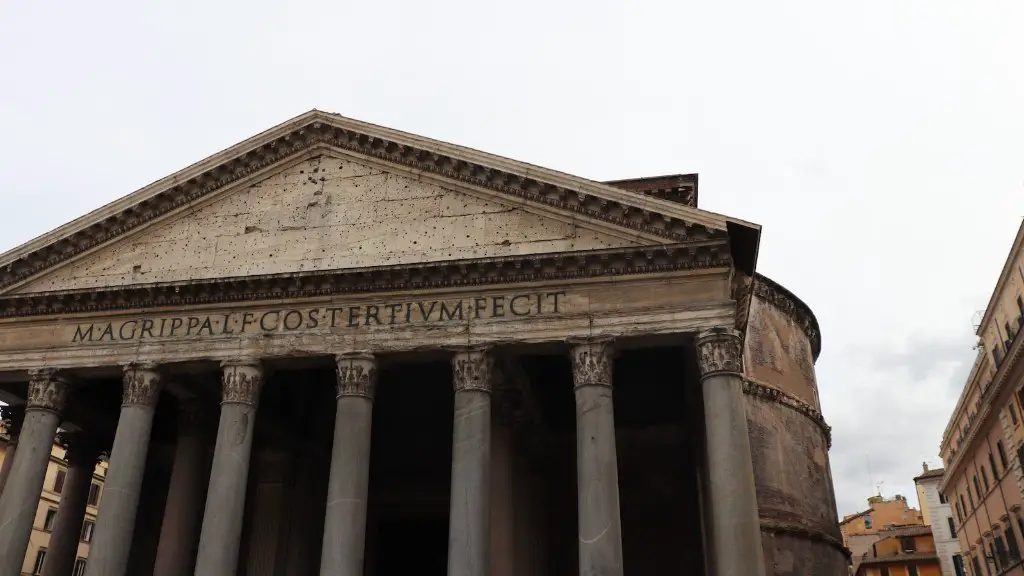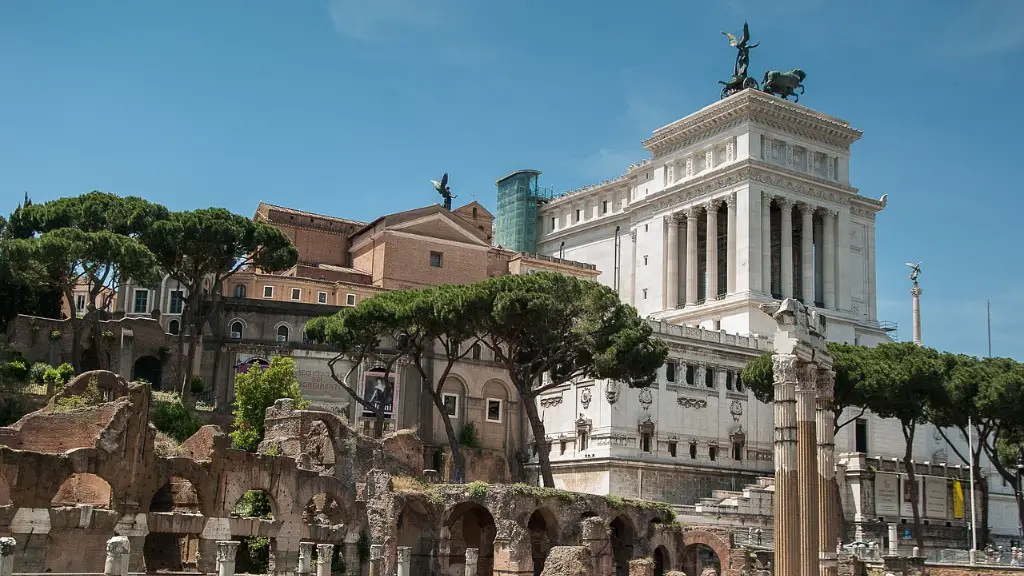Transformation of Economic Model
The Ancient Romans incorporated a unique and effective model of economics that provided the strength and power they needed. The basic structure of Roman economic organization was modeled on the slave plantations of Greece, where slaves worked under the supervision of a foreman. However, the Roman economy was more complex and involved free enterprise, trade, and agricultural production—allowing for economic growth. The Republic incentivized its citizens to further the success and stability of the state through the imposition of taxes, and the ruling classes were typically the upper class Roman citizens, typically the landowning class. They were able to control the market and become dominant economic actors.
During the Republic, the presence of organized markets in cities were essential for the trading of agricultural produce and goods, and for the efficient distribution of goods. Not only had the regulation of markets been established by the Romans, but other institutions such as banks, public offices and courtrooms were also present. The integration of a solid infrastructure provided incentives for the development of private business and supported the production of wealth at a consistent rate.
Growth Through Trade & Investment
Changes in the Roman world economy during the Late Republic revealed the power of trade and investment in Roman society. Efficient transportation that was organized by the Roman government resulted in an increase in commerce, allowing Rome to gain wealth from foreign trade and investment. Further, the importation of expensive luxury goods, such as silks, ivory and spices, meant that the large landowning classes could gain extra income from sales and purchase of these goods. Investment activities were especially profitable for the Roman elite, who had the power to control the market.
The Roman Republic heavily regulated its economy to facilitate a smooth flow of goods. The government worked to secure safe transportation of the goods and imposed reasonable taxes to fund public works and other government operations. The government provided essential services and infrastructure to the people, such as public transportation, roads, and aqueducts, which indicates a certain level of economic freedom.
Rise of Inflation
By the end of the Republic, Rome was seeing a rapid rise in inflation. The Republic’s currency, the denarius, was losing its value in comparison to Rome’s trading partners. This lead to a decline in the standard of living, as prices increased and wages stagnated. The government attempted to bring an end to the decline of the currency by introducing a series of coins with varying levels of gold and silver. These coins were known as the “aurei” and limited the use of money. The introduction of the aurei helped to combat inflation and protect the wealth of the upper classes, while working class citizens found it increasingly difficult to maintain their quality of life.
Economic Contribution Through War and Expansion
The Ancient Rome Republic were committed to conquering new regions and expanding their territories, offering economic opportunities and resources for the Roman Republic’s advancement. This meant huge investment in military and naval administration and the economy thrived on these expansions.
The Roman Republic often used war and conquest as a way to build economic stability. The expansion of territories allowed for the importation of new resources that were essential for the development of the Roman economy. These resources were in the form of iron, copper and other metals; foodstuffs such as grain and oil; and, slaves—most of which were used to work in agriculture. The acquisition and exploitation of resources, such as the Rhone Valley and North Africa, resulted in the introduction of new crops and improved agricultural techniques that further increased the wealth and stability of the Republic.
Growth in Social Mobility
The Ancient Roman Republic had an economic system that allowed for greater social mobility than in other contemporary civilizations, allowing individuals from all social classes to accumulate wealth and advance in society. For example, merchants were integral to Roman economic life, as were professionals and entrepreneurs. Not only did these professions offer increased social mobility, but they also contributed to the overall stability and strength of the economy, as individuals were able to access resources and trade goods in order to gain wealth. In addition, through trading and commerce, citizens had the opportunity to own land, increase their income and gain power within the state.
Fluctuations in the Economy
The economy of the Ancient Rome Republic was not without its share of problems. The economy and political situation were ultimately affected by the growth of the population and the influx of foreign slaves. During this time, Rome’s economy began to experience financial difficulties, as the state struggled to create profitable investments. This was further compounded by frequent wars and political unrest, leading to a weakened economy.
Technological & Infrastructure Improvements
The Ancient Roman Republic was also able to achieve economic growth by improving its infrastructure and developing necessary technologies. The Republic saw a significant advancement in transportation, with the construction of roads, bridges, and aqueducts. This allowed the state to expand its trade networks and access new resources. Additionally, the Romans developed helpful technologies, such as water-driven mills and other machines, increasing the efficiency and productivity of the economy.
Economy After the Fall of Rome
With the fall of the Roman Republic, the Roman economy was plunged into chaos. The empire continued to suffer from unstable trade networks, as well as a weakened currency, with inflation and hyperinflation eroding their wealth. The Roman economy was further affected by frequent wars and revolts, as well as barbarian invasions, leading to its eventual decline. It is clear that the Roman economy was successful during the Republic through its effective capital management, innovative technological advancements and willingness to expand their territories. However, the collapse of the Republic left the economy in a state of chaos, and the Roman economy was not able to recover from its losses.
Conclusion of Ancient Rome Economics
The Ancient Roman Republic had a strong and prosperous economy, due to its effective economic model, flourishing trade, and technological and infrastructural advances. Through its capital management, innovative approaches, and the implementation of complex political and economic systems, the Republic was able to foster an economy that was both profitable and stable. Though the Republic eventually fell and the economy was plunged into chaos, the Ancient Roman Republic, at its peak, had one of the strongest economies in the region.


